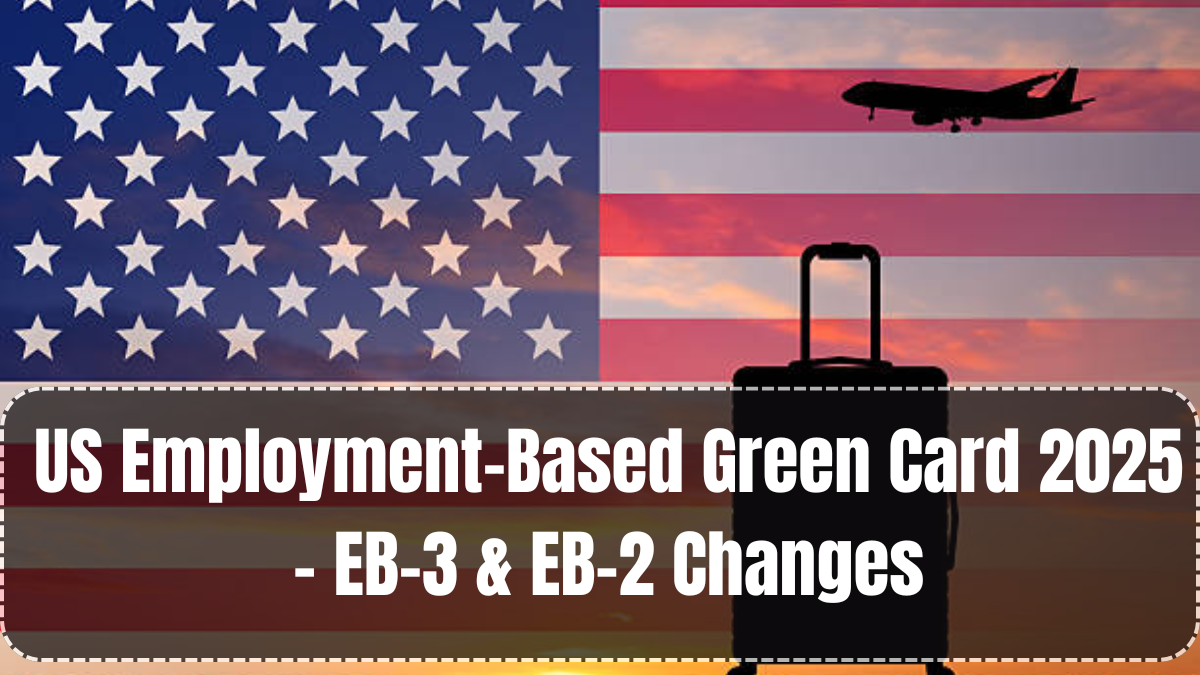For thousands of skilled professionals and foreign workers, obtaining a US Green Card via Employment is the ultimate pathway to long-term stability and career growth in the United States. In 2025, major policy tweaks and visa bulletin adjustments have changed how EB-2 and EB-3 applications are processed, prioritized, and approved.
Whether you’re already working in the US or planning to move under employer sponsorship, it’s crucial to understand the latest developments. The 2025 update brings both new opportunities and renewed challenges, particularly for applicants from high-demand countries like India and China.

Overview of EB-2 and EB-3 Categories
The US Green Card via Employment is available under several employment-based (EB) categories. The most commonly used are:
-
EB-2: For professionals with advanced degrees or exceptional ability
-
EB-3: For skilled workers, professionals, and some unskilled labor roles
-
EB-1 and EB-4/EB-5: Also exist but are outside the scope of regular employment sponsorships
In 2025, the focus remains on EB-2 and EB-3, as these account for the majority of employer-sponsored green card applications.
Key Changes Introduced in 2025
This year, USCIS and the Department of State have implemented several new procedures to streamline processing and prioritize backlog cases.
Key updates include:
-
Cross-category flexibility: EB-3 applicants with higher qualifications can now opt for EB-2 processing if slots are open
-
H-1B to Green Card fast-track for STEM roles, reducing wait time by 6–12 months
-
Priority Date Advancements: Monthly visa bulletins show modest forward movement for Indian nationals in EB-3
-
Increased digitization: PERM and I-140 filings are now partially automated to speed up adjudication
-
EAD validity extension: EADs linked to pending Green Card cases extended to 2 years
These changes aim to improve transparency, processing speed, and flexibility for both applicants and employers.
EB-2 vs EB-3 – What’s Better in 2025?
Choosing the right category is key when applying for a US Green Card via Employment. While EB-2 often moves faster, EB-3 may suit candidates with slightly lower qualifications.
| Category | Ideal For | Priority Movement (India) | Processing Speed |
|---|---|---|---|
| EB-2 | Master’s + 5 yrs or exceptional ability | Feb 2013 → Mar 2013 | 8–15 months |
| EB-3 | Bachelor’s + 2+ yrs experience | Aug 2012 → Oct 2012 | 10–18 months |
As of 2025, both categories are seeing modest movement, but EB-2 still leads in priority timelines for most regions.
Impact on Indian & Chinese Applicants
Backlogs for India and China continue to pose challenges, but the US Green Card via Employment system is becoming more transparent and efficient.
Updates relevant to high-demand nationalities:
-
USCIS has resumed quarterly spillovers to allocate unused EB-1 and EB-5 slots to EB-2
-
Priority Dates are moving 1–2 months per visa bulletin
-
Indian H-1B holders in STEM now benefit from fast-track STEM adjudication pilot
-
Dual filing of EB-2 and EB-3 petitions now allowed for the same job profile
These changes offer new hope for applicants who’ve waited over a decade for green card approval.
How to Improve Your Chances in 2025
To maximize success in obtaining a US Green Card via Employment, applicants should:
-
File I-140 early and request premium processing
-
Maintain H-1B status and ensure no gaps in employment
-
Request concurrent filing of I-485 if priority date is current
-
Prepare additional documentation for RFE (Request for Evidence) scenarios
-
Seek employer support for job reclassification if EB-2 is possible
Working closely with an immigration attorney is advised, especially under the evolving 2025 framework.
FAQs
What is the difference between EB-2 and EB-3?
EB-2 is for advanced degree professionals and has faster movement, while EB-3 is for skilled workers with fewer experience or degree requirements.
Has USCIS started speeding up Green Card processing?
Yes, certain STEM and H-1B applicants are now fast-tracked under pilot programs. PERM and I-140 steps are increasingly digitized.
Can I switch from EB-3 to EB-2?
Yes, if your qualifications meet EB-2 standards and your employer supports the reclassification, you may benefit from faster processing.
Are priority dates moving faster for India?
Slightly. Priority Dates have advanced by 1–2 months so far in 2025, with more movement expected in spillover periods.
Do I need to stay in the same job while waiting?
Yes, significant job changes during Green Card processing may require a new labor certification and restart of the process.
Click here to know more.
